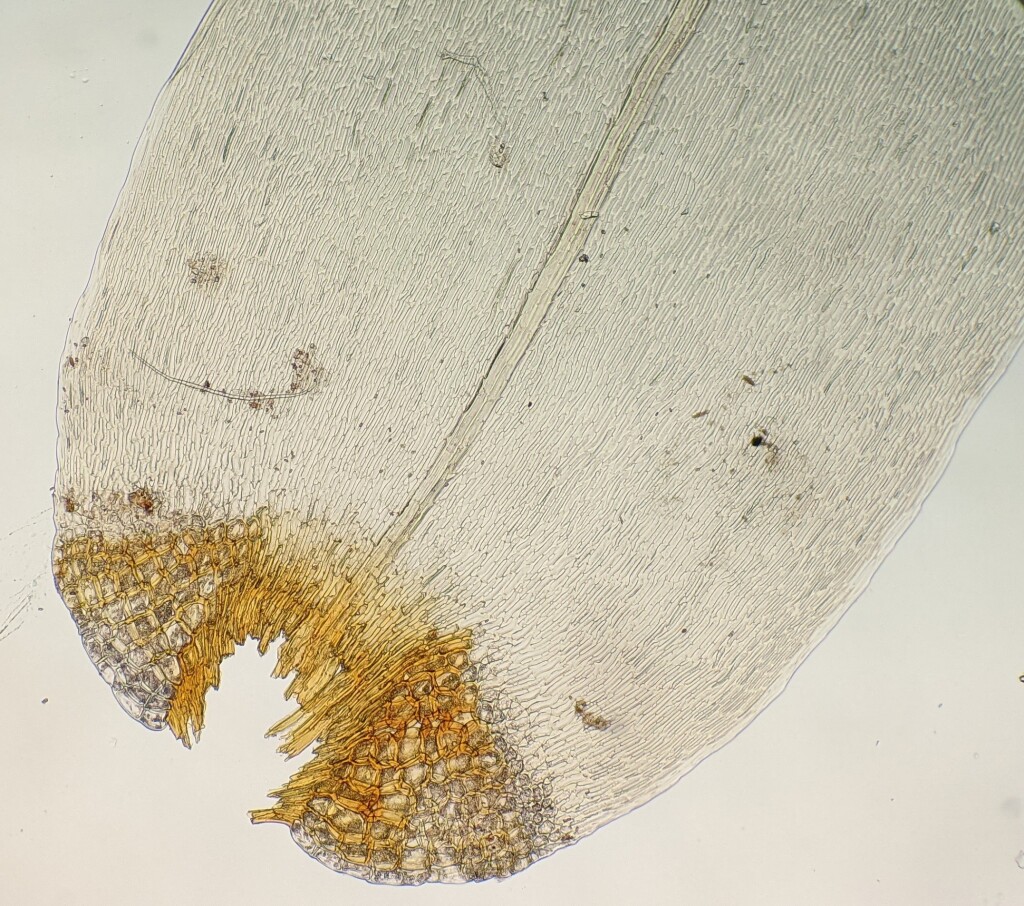Dicranoloma billarderii
(Brid.) ParisAsexual propagules absent. Turves 1.5–11 cm tall on soil, rocks, logs or tree bases, glossy yellowish or light to dark green. Stems simple or sparsely branched, brown, with sparse pale rhizoids in leaf axils; central strand present. Leaves falcate-secund, with apices generally twisted when dry, otherwise similar to when moist, lanceolate, 4.7–8.8 mm long, 0.9–1.7 mm wide, canaliculate at base becoming carinate toward apex; apex acuminate; costa distinct, subpercurrent, abaxially with scattered teeth toward apex; margin serrulate near apex, entire below, plane or weakly undulate, with a border of (1–) 2–6 (–8) rows extending from base to just below or within serrulate part of margin; lamina cells in apical half oblong to linear, 12–90 (–114) μm long, 5–10 μm wide; lamina cells in basal half elongate to linear, 25–139 μm long, 7–13 (–15) μm wide; alar cells quadrate to rectangular, 13–76 μm long, 8–45 μm wide, sometimes slightly inflated, with colourless to yellowish-brown or brown walls. Seta solitary or very rarely in pairs, 14.5–29 mm long, yellowish, smooth. Capsule horizontally to vertical, cylindric, curved, 3–3.8 mm long. Operculum obliquely rostrate from conical base, 3–3.2 mm long.
GleP, VVP, GipP, OtP, WaP, CVU, GGr, DunT, NIS, EGL, EGU, WPro, HSF, HNF, OtR, Strz, MonT, HFE, VAlp. Widespread and common in sclerophyll forests and rainforests along and south of the Great Dividing Range. Also Western Australia, South Australia, New South Wales and Tasmania. New Zealand, southern and eastern Africa, Madagascar, sub-Antarctic Islands and southern South America. .
 Spinning
SpinningKlazenga, N. (2003). A revision of the Australasian species of Dicranoloma (Bryophyta, Dicranaceae). Australalian Systematic Botany 16: 427–471.
Klazenga, N. (2012). Australian Mosses Online. 33. Dicranaceae: Dicranoloma. http://www.anbg.gov.au/abrs/Mosses_online/Dicranaceae_Dicranoloma.pdf.


